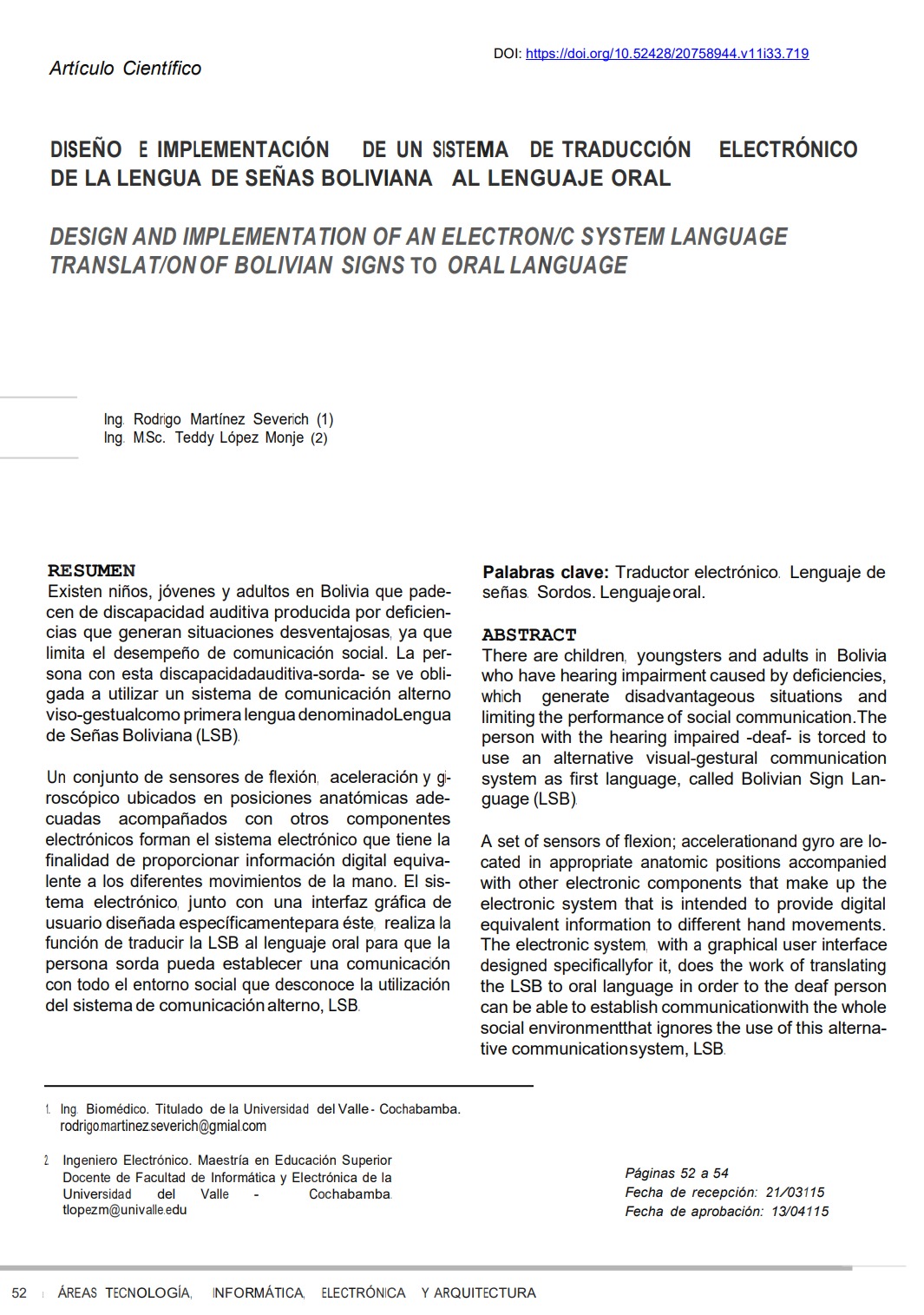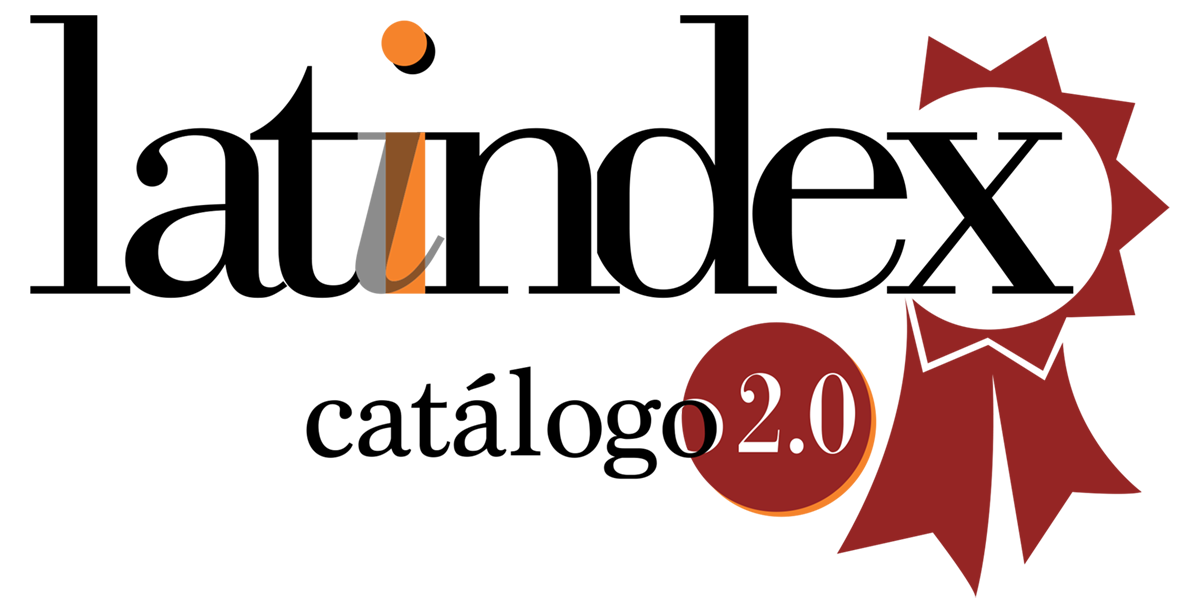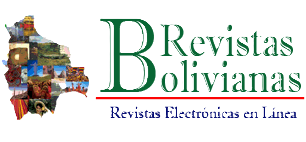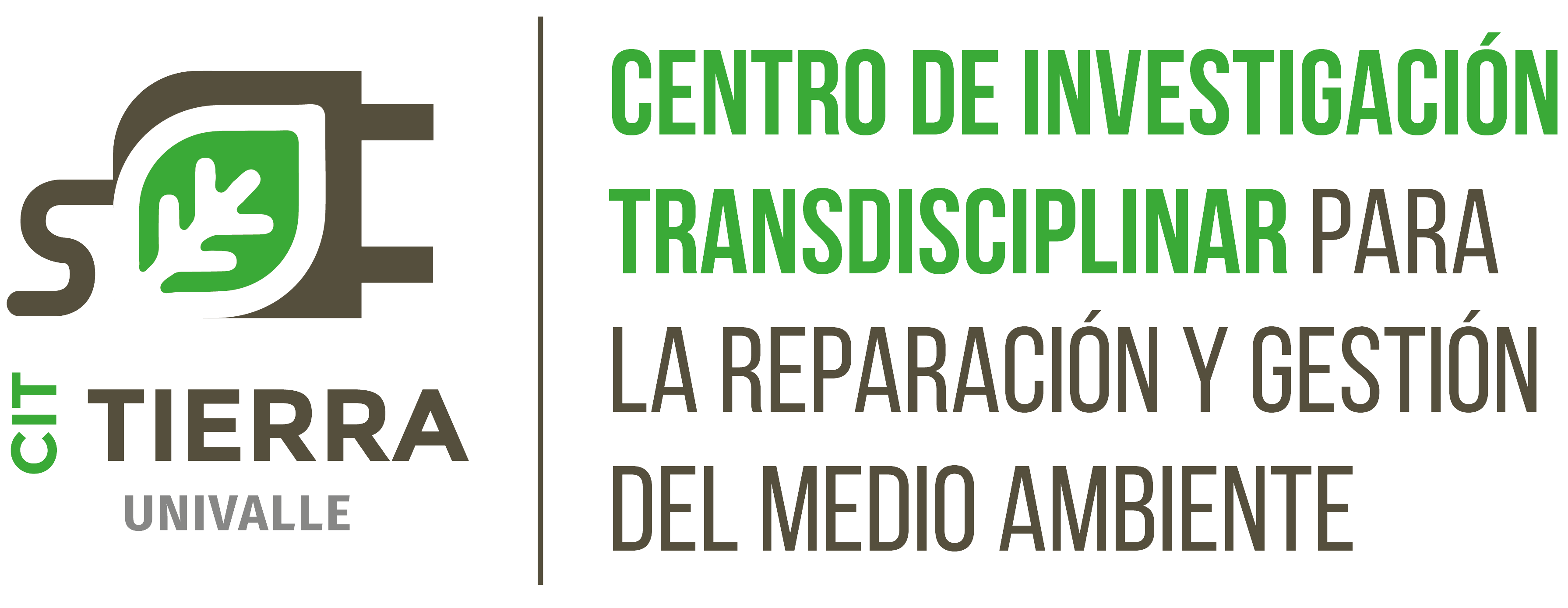Design and Implementation of an Electronic System Language Translation of Bolivian Signs to Oral Language
DOI:
https://doi.org/10.52428/20758944.v11i33.719Keywords:
Electronic Translator, Sign language, Deaf people, Oral languageAbstract
There are children, youngsters and adults in Bolivia who have hearing impairment caused by deficiencies, which generate disadvantageous situations and limiting the performance of social communication. The person with the hearing impaired deaf is torced to use an alternative visualgestural communication system as first language, called Bolivian Sign Language (LSB). A set of sensors of flexion; acceleration and gyro are located in appropriate anatomic positions accompanied with other electronic components that make up the electronic system that is intended to provide digital equivalent information to different hand movements. The electronic system, with a graphical user interface designed specifically for it, does the work of translating the LSB to oral language in order to the deaf person can be able to establish communication with the whole social environment that ignores the use of this alternative communication system, LSB
Downloads
References
(1) INSTITUTO NACIONAL DE ESTADISTICA Análisis de la situación de salud Cochabamba, 2009.
(2) MINISTERIO DE EDUCACIÓN DE BOLIVIA, Curso de enseñanza de la Lengua de Señas Boliviana. La Paz: 2010.
(3) MINISTERIO DE EDUCACIÓN DE BOLIVIA, Diccionario bilingüe Lengua de Señas Boliviana/Castellano. La Paz: 201 O.
(4) KAPANDJI, A. l. Fisiología articular: Tomo 1 miembro superior. Madrid: Panamericana, 2006, 6ª ed

Downloads
Published
How to Cite
Issue
Section
License
Copyright (c) 2015 Rodrigo Martínez Severich, Rodrigo Martínez Severich y Teddy López Monje

This work is licensed under a Creative Commons Attribution 4.0 International License.
Authors who publish with this journal agree to the following terms:
- Authors retain copyright and grant the journal right of first publication with the work simultaneously licensed under a Creative Commons Attribution License 4.0 that allows others to share the work with an acknowledgement of the work's authorship and initial publication in this journal.
- Authors are able to enter into separate, additional contractual arrangements for the non-exclusive distribution of the journal's published version of the work (e.g., post it to an institutional repository or publish it in a book), with an acknowledgement of its initial publication in this journal.
- Authors are permitted and encouraged to post their work online (e.g., in institutional repositories or on their website) prior to and during the submission process, as it can lead to productive exchanges, as well as earlier and greater citation of published work.














